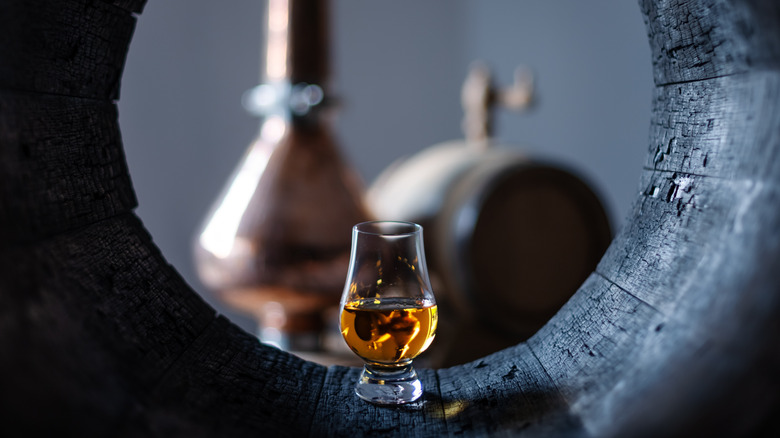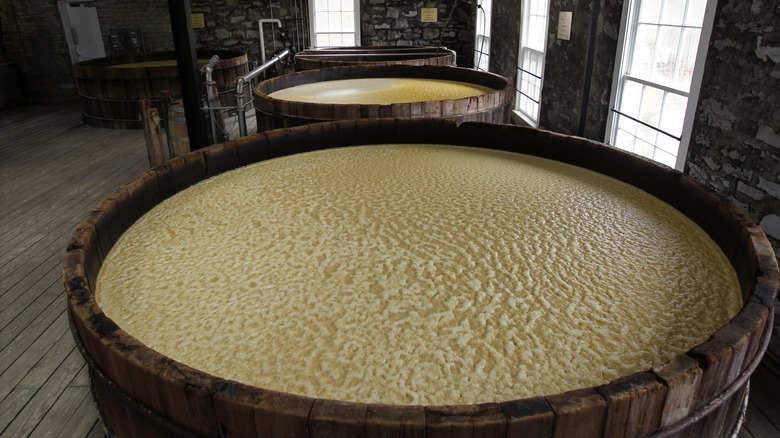Sweet Mash Vs Sour Mash: How The Bourbon Fermentations Match Up
All spirits need to undergo some form of fermentation. In the case of bourbon, sour mash is the standard process, and one used by nearly all bourbon distilleries. However, in recent years, more and more bourbon distillers are turning to sweet mash instead. So what exactly do the two fermentations entail and how do they match up? In short, sweet mash results in a potentially smoother bourbon with different flavor profiles.
Largely credited to Dr. James C. Crow, Oscar Pepper's master distiller in the 1830s, the sour mash process involves using old mash (or the spent mash left over from a previous batch of bourbon, which is also referred to as backset or stillage) to kick start the fermentation process. The old mash is acidic, which helps prevent unwanted bacterial growth during the bourbon fermentation process, which can happen when the pH levels get too high. Using old mash also helps ensure a more consistent flavor from batch to batch.
The sweet mash difference
Although the sweet mash process has seen a recent resurgence, it's not new and has been around as long as sour mash. Sweet mash doesn't use old mash. Instead, each batch of bourbon starts with fresh water, grains, and yeast.
The danger with using sweet mash is the risk of bacterial growth, since there's no acidic sour mash to keep pH levels low — and you can't add any additional acidic component since bourbon by law cannot include additives other than water. Distillers must keep their facilities and equipment extremely clean to avoid potential contamination, something modern technology helps with. Distillers also need to use more energy, since they don't have the benefit of the still-warm old mash to heat their mash tub, and they must also find a way to dispose of all their old mash once they're done.
Despite the challenges, distillers that use the sweet mash process like the control they have over the mash and the end product, which tends to have a softer taste and mouthfeel. Using the sweet mash process often leads to more fruit or floral notes in the bourbon. Sweet mash bourbon can also use a lower barrel entry proof, which can also help enhance the overall flavor.

